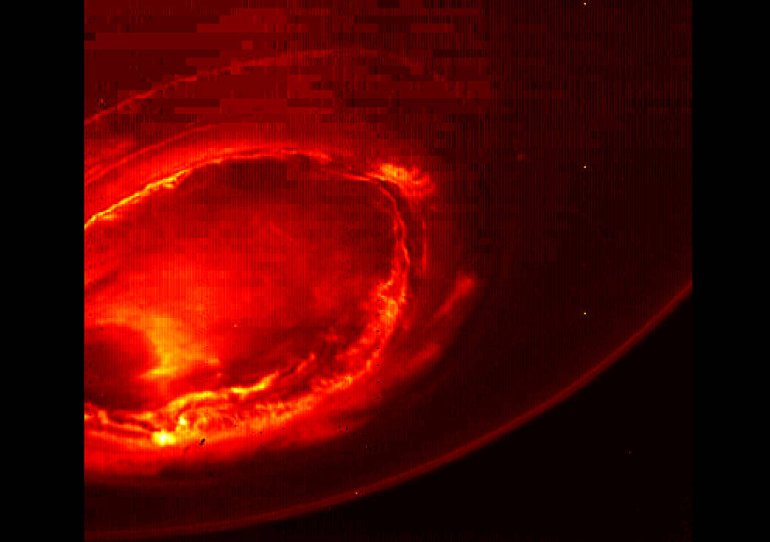
CAPE CANAVERAL, Fla. — Scientists have never explored Jupiter’s north pole — until now.
NASA’s spacecraft Juno sent back the first-ever images of Jupiter’s north pole — photographs that reveal storm systems and weather activity unlike anything scientists have ever seen before on any of our solar system’s gas giants, the space agency said Friday.
These images were captured during Juno’s first orbital flyby of the planet. The spacecraft, which launched in August 2011 from Cape Canaveral, Florida, took five years to get there, arriving on July 4.
During Juno’s flyby, it hovered about 2,500 miles above the planet’s swirling clouds, capturing images of Jupiter’s north and south poles.
Although scientists still have a lot of data to analyze, they’ve noticed some key findings. For example, the planet’s north pole looks nothing like the iconic marbling that’s associated with Jupiter.
One of a kind
“It’s bluer in color up there than other parts of the planet, and there are a lot of storms,” said Scott Bolton, principal investigator of the Juno mission, at the Southwest Research Institute in San Antonio. “We’re seeing signs that the clouds have shadows, possibly indicating that the clouds are at a higher altitude than other features.”
Besides the fact that Jupiter is pretty unrecognizable in these new photographs, it also lacks at least one feature that its gas giant cousin Saturn has.
“Saturn has a hexagon at the north pole,” said Bolton. “There is nothing on Jupiter that anywhere near resembles that.”
This indicates that Jupiter is really one of a kind, he said.
As for Juno, it’s still cruising along, collecting data. On the probe, there’s the JunoCam snapping pictures of the largest planet in our solar system, but there are also eight other instruments picking up valuable information for the mission.
Getting under the skin
One tool, known as the Jovian Infrared Auroral Mapper (JIRAM), captured infrared wavelengths of Jupiter’s north and south pole, essentially getting underneath the planet’s skin, according to Alberto Adriani, JIRAM co-investigator, who is based in Rome.
Through this imaging, scientists have identified warm spots on the planet, areas that have not been seen before. Scientists also captured images of the planet’s southern aurora — dancing lights that also appear at the poles here on Earth.

Jupiter’s ghostly sounds
Another interesting finding — new clues about the sounds emanating from Jupiter.
Juno’s Radio/Plasma Wave Experiment, nicknamed Waves, has recorded ghostly-sounding transmissions coming from Jupiter, according to NASA.
But before anyone throws out the “a” word — aliens — it’s important to note that we have known about these radio emissions since the 1950s. However, scientists have never been able to analyze them (cue “X-Files” music here) up close.
So is Jupiter talking to us? In a way, yes.
“Jupiter is talking to us in a way only gas-giant worlds can,” Waves co-investigator Bill Kurth of the University of Iowa said.
The sounds may be generated by the massive auroras on Jupiter’s north pole.
“These emissions are the strongest in the solar system. Now we are going to try to figure out where the electrons come from that are generating them,” Kurth said.
Juno still has 36 more flybys of Jupiter, giving scientists more time to explore the wonders and mysteries of the giant planet.